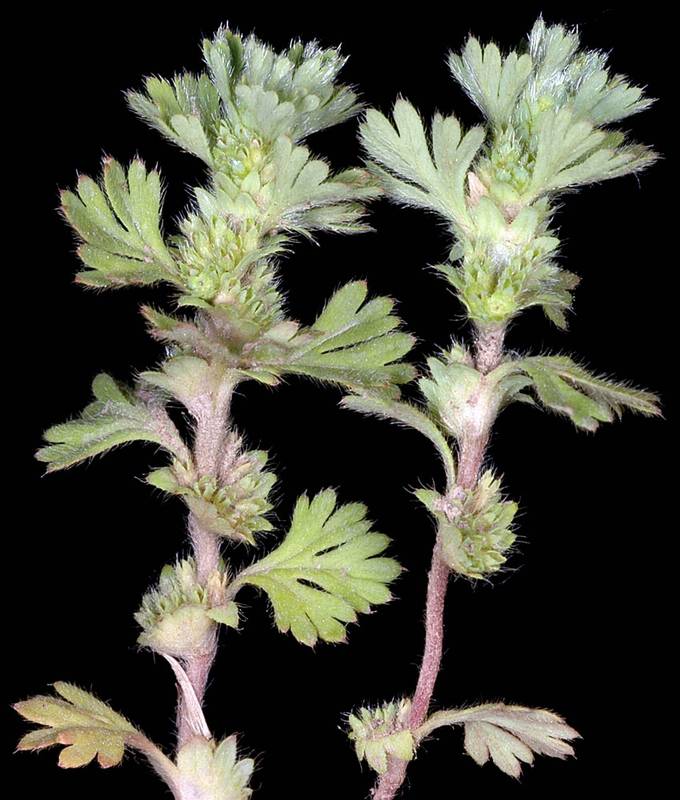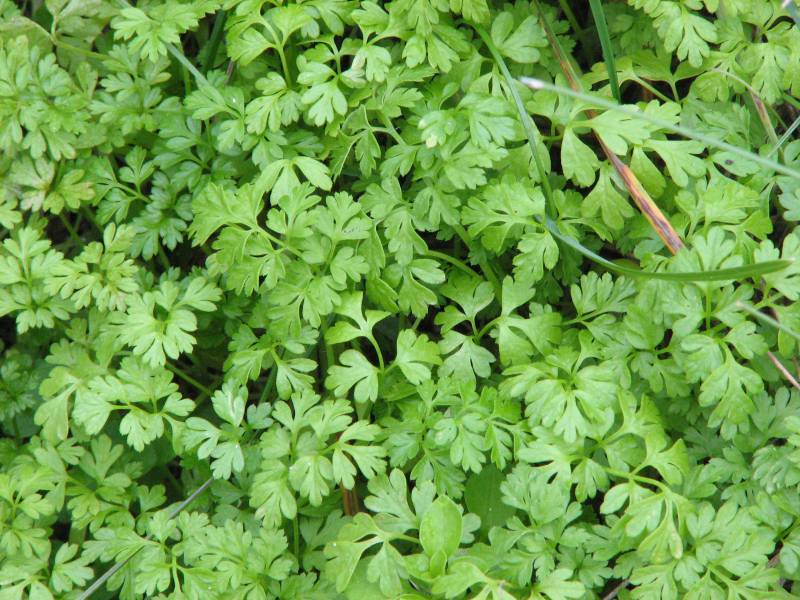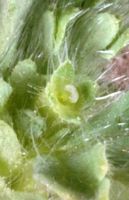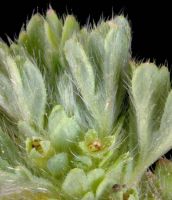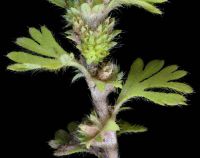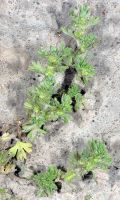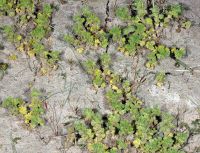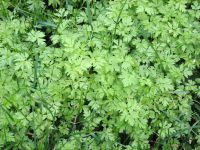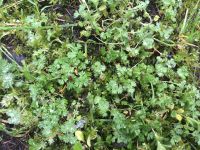Distribution: Occurring west of the Cascades crest and in the Columbia River Gorge in Washington; southern British Columbia to California, reported in Idaho, also along Atlantic Coast in the U.S.
Habitat: Ledges, often limy, sandy shores, hot springs, and other disturbed open ground at low elevations.
Flowers: April-May
Origin: Introduced from Eurasia and northern Africa
Growth Duration: Annual
Conservation Status: Not of concern
Low, spreading annual, the freely branched stems 5-10 cm. long, somewhat pubescent.
Leaves short-petiolate, the blades obovate with a wedge-shaped base, bi-ternately lobed, 4-8 mm. long; stipules sheathing, deeply toothed.
Flowers borne along most of the length of the stem, usually 5-15 at each node in the axils of the sheathing stipules, opposite the petiole; pedicles shorter or longer than the stipules; calyx tube 1-1.5 mm. long, narrowly bell-shaped, with 4 short, triangular, erect lobes; petals none; stamens usually one.
Achene glabrous, ellipsoid.
Publication: Species Plantarum 1: 123. 1753.
PNW Herbaria: Specimen records of Aphanes arvensis in the Consortium of Pacific Northwest Herbaria database.
WA Flora Checklist: Aphanes arvensis checklist entry.
OregonFlora: Aphanes arvensis information.
E-Flora BC: Aphanes arvensis atlas page.
CalPhotos: Aphanes arvensis photos.
USDA Plants: Aphanes arvensis information.


